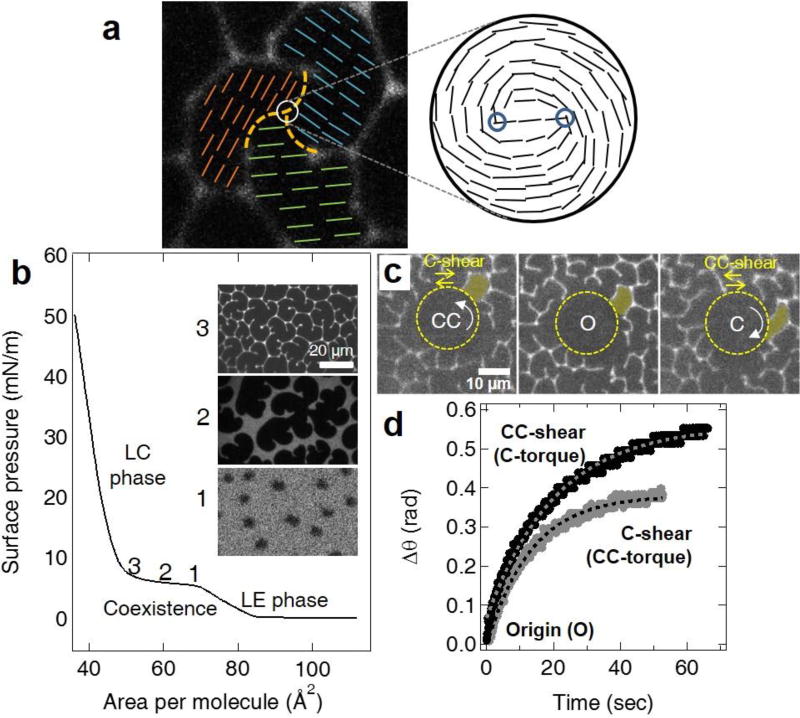Fig. 1.
(a) Schematics for describing a tilt of DPPC molecules in a condensed domain. Each direction of the tilt (blue, orange, and green solid lines) is localized at three different lobes of the domain, respectively. Yellow dotted lines across the inside of the domain represents tilt gradient lines where the tilt direction changes abruptly. A enlarged image of a solid white circle at a center of the domain indicates a disclination pair (blue circles) that might facilitate to produce the tilt gradient lines. (b) Epifluorescence microscope images show liquid condensed (LC) r-DPPC domains (black) grow from a uniform liquid expanded (LE) phase (grey) with spiral arms that rotate in counter-clockwise (CC) direction, which is retained even in fully condensed state (3) at the co-existence plateau of the isotherm. The fraction of condensed domains increases with surface pressure from (1) to (3) (c) Domains (e.g. highlighted yellow example) are compacted when microbutton is CC-torqued (C-shear), but extended when C-torqued (CC-shear). O represents monolayer morphology before shear. (d) The limiting rotational strain, Δθl is greater for the same ~ 440 nN/m torque applied in the C direction than the CC direction, reflecting the chirality of the rheological response.

